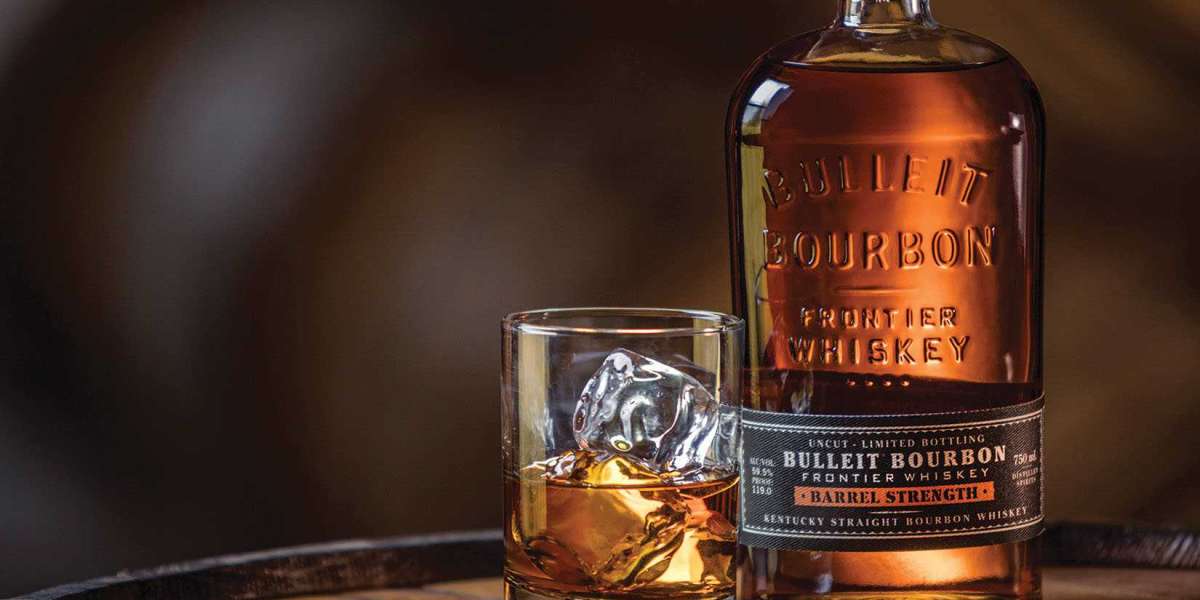Bourbon whiskey, once a humble and relatively obscure spirit, has ascended to a place of prominence in the global spirits market. Known for its rich, complex flavors and deep historical roots, bourbon has captured the hearts and palates of connoisseurs and casual drinkers alike. This article explores the journey of bourbon whiskey from its early days of obscurity to its current status as a celebrated and sought-after spirit.
The Early Days of Bourbon
Origins in Kentucky
The story of bourbon whiskey begins in the late 18th century in the American frontier, specifically in Kentucky. Settlers in the region began distilling surplus corn into whiskey. The unique geographical and environmental conditions of Kentucky—its fertile soil, limestone-filtered water, and variable climate—provided the perfect setting for producing high-quality whiskey.
The Name "Bourbon"
The name "bourbon" is thought to be derived from Bourbon County, Kentucky, which was named after the French royal House of Bourbon. This region became a significant area for whiskey production, and the spirit eventually took on the name of the county where it was made.
Early Production Methods
Early bourbon production was rudimentary by today's standards. Small-scale distillers used simple pot stills and relied on trial and error to refine their methods. Despite the lack of sophisticated technology, these early pioneers managed to create a distinctive spirit that would lay the groundwork for modern bourbon.
From Obscurity to Popularity
19th Century Growth
In the 19th century, bourbon began to gain traction beyond Kentucky. Improvements in distillation techniques, the construction of the first commercial distilleries, and the establishment of trade routes facilitated the spread of bourbon to other parts of the United States.
Prohibition and Decline
The passage of the 18th Amendment in 1920, which ushered in the era of Prohibition, dealt a severe blow to the bourbon industry. Legal production and sale of alcoholic beverages were banned, forcing many distilleries to shut down. Some managed to survive by producing medicinal whiskey, which was legally available by prescription. However, the industry as a whole suffered, and bourbon entered a period of decline.
Post-Prohibition Revival
The repeal of Prohibition in 1933 marked the beginning of a slow revival for bourbon. Distilleries that had managed to stay afloat resumed production, and new ones emerged. Despite this resurgence, bourbon still faced stiff competition from other spirits like vodka and gin, which had become popular during the dry years.
The Modern Bourbon Boom
Craft Distilling Movement
The late 20th and early 21st centuries saw the rise of the craft distilling movement, which played a pivotal role in bourbon's resurgence. Small, independent distilleries began experimenting with traditional methods and innovative techniques, producing high-quality bourbons that caught the attention of enthusiasts and critics alike.
Global Recognition
As the craft distilling movement gained momentum, bourbon started receiving global recognition. International markets, particularly in Europe and Asia, developed a taste for this quintessentially American spirit. Bourbon's unique flavor profile—characterized by notes of caramel, vanilla, oak, and spice—appealed to a wide range of palates.
Iconic Brands and Bottlings
Several iconic brands and bottlings have contributed to bourbon's rise to prominence. Names like Jim Beam, Maker's Mark, and Buffalo Trace became synonymous with quality and tradition. Limited-edition releases and single-barrel expressions further fueled the enthusiasm for bourbon, with collectors and aficionados eagerly seeking out these coveted bottles.
Bourbon Festivals and Tourism
The popularity of bourbon has also led to the growth of bourbon-related tourism. The Kentucky Bourbon Trail, a collection of distilleries offering tours and tastings, attracts visitors from around the world. Bourbon festivals, such as the Kentucky Bourbon Festival in Bardstown, celebrate the heritage and culture of bourbon, drawing crowds of enthusiasts and industry professionals.
The Characteristics of Bourbon
Legal Definition
To be legally classified as bourbon, the spirit must meet specific criteria established by U.S. law. It must be made from a grain mixture that is at least 51% corn, aged in new charred oak barrels, distilled to no more than 160 proof, entered into the barrel at no more than 125 proof, and bottled at no less than 80 proof. These regulations ensure a consistent quality and characteristic flavor profile.
Flavor Profile
Bourbon's flavor profile is influenced by several factors, including the grain mixture (or mash bill), fermentation, distillation, and aging process. The high corn content typically imparts a sweetness, while the new charred oak barrels contribute vanilla, caramel, and toasted oak notes. Rye and malted barley, often used in smaller quantities, add spiciness and complexity.
Aging Process
The aging process is crucial to bourbon's character. As the whiskey ages in charred oak barrels, it interacts with the wood, absorbing compounds that contribute to its color, aroma, and flavor. The variable climate of Kentucky, with its hot summers and cold winters, accelerates this process by causing the whiskey to expand and contract within the barrel, enhancing the maturation process.
Why Bourbon Appeals to Modern Drinkers
Craftsmanship and Tradition
Modern bourbon drinkers appreciate the craftsmanship and tradition that go into each bottle. The meticulous care taken in selecting grains, distilling, and aging the whiskey resonates with those who value artisanal products. The story of bourbon, deeply intertwined with American history and culture, adds to its allure.
Versatility in Cocktails
Bourbon's rich and complex flavor profile makes it a versatile base for cocktails. Classic drinks like the Old Fashioned, Manhattan, and Mint Julep showcase bourbon's ability to shine in mixed drinks. The resurgence of craft cocktails has further elevated bourbon's status in bars and restaurants worldwide.
Collectability and Exclusivity
Limited-edition releases and small-batch bourbons have created a sense of collectability and exclusivity. Enthusiasts eagerly seek out these special bottlings, often going to great lengths to add them to their collections. This aspect of bourbon culture has added a layer of excitement and prestige to the spirit.
Community and Culture
The bourbon community is a vibrant and passionate group of individuals who share a love for this spirit. Tasting events, distillery tours, and online forums provide opportunities for enthusiasts to connect, share knowledge, and celebrate their favorite bourbons. This sense of community enhances the overall appeal of bourbon and rock and rye whiskey.
Conclusion
The rise of bourbon whiskey from obscurity to prominence is a testament to its enduring quality, rich history, and unique flavor profile. From its humble beginnings in Kentucky to its current status as a globally recognized and celebrated spirit, bourbon has captivated the hearts and palates of drinkers worldwide. Whether enjoyed neat, on the rocks, or in a craft cocktail, bourbon whiskey offers a taste of tradition and a promise of excellence that continues to inspire and delight. As we raise our glasses to this remarkable journey, we celebrate not just the spirit of bourbon, but the spirit of those who have crafted, preserved, and cherished it through the ages.








